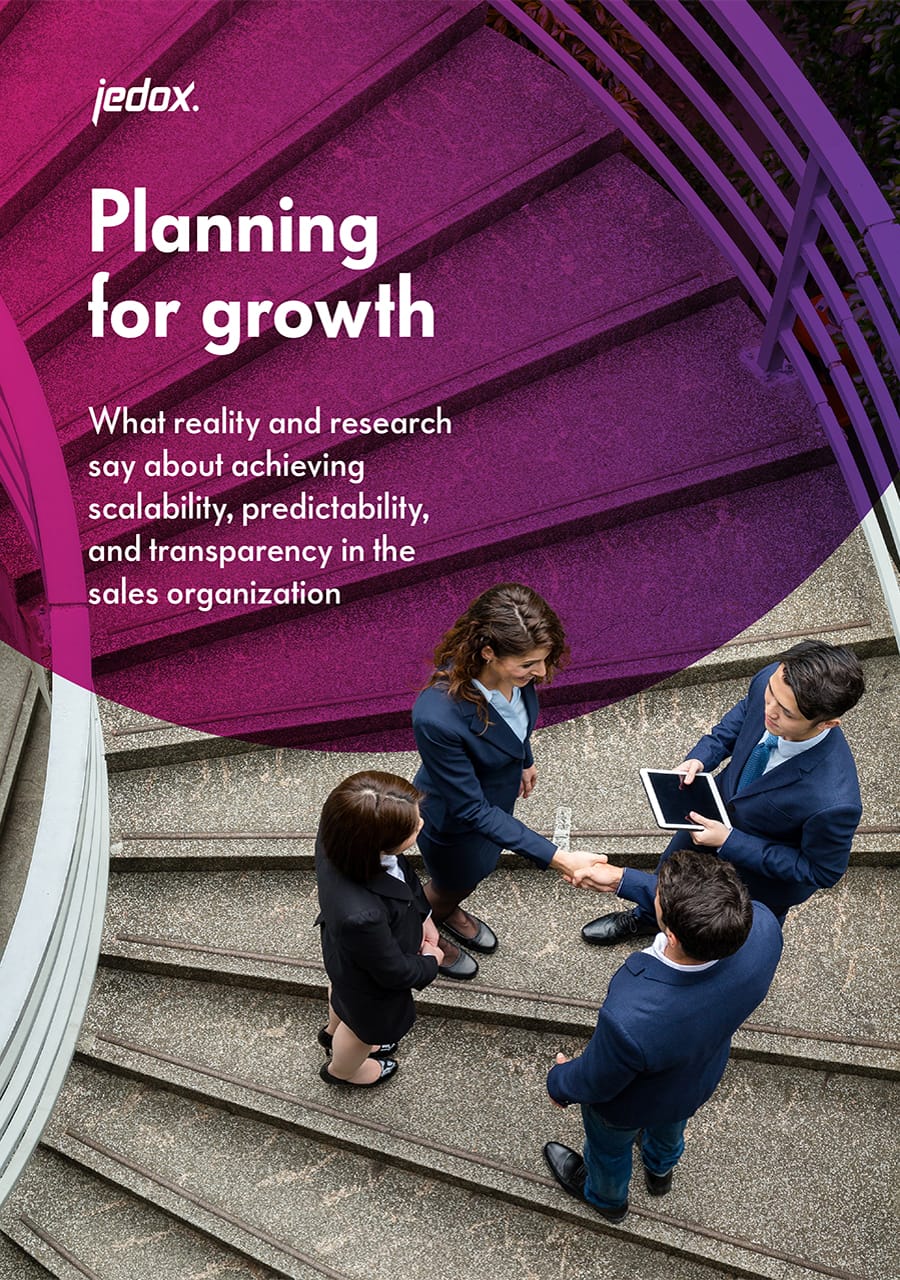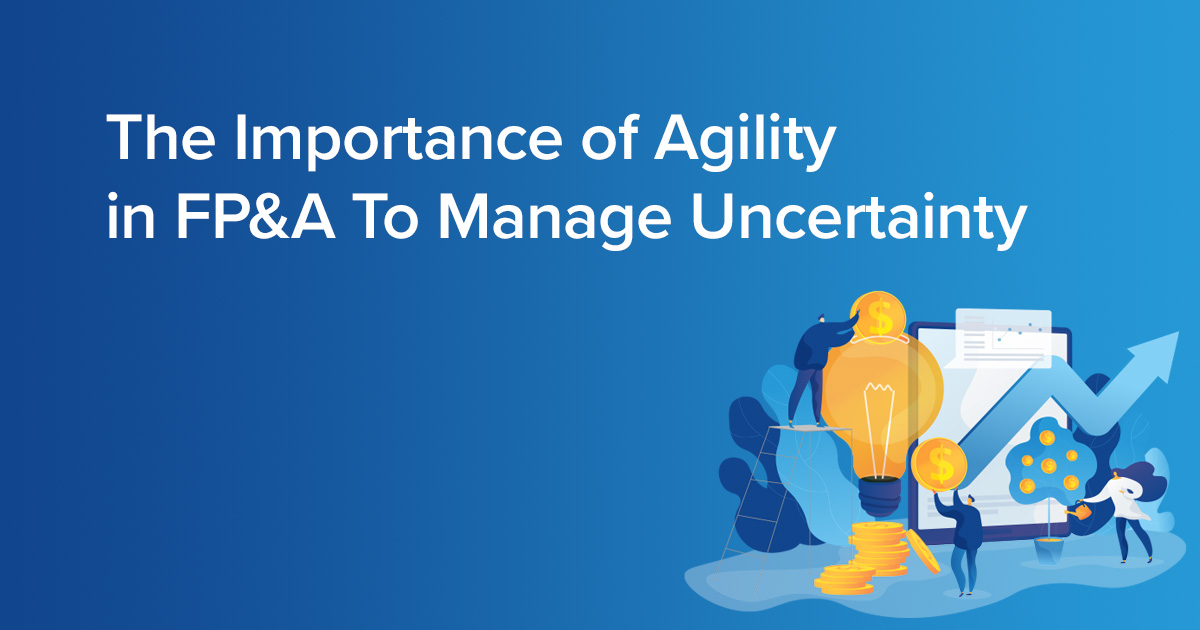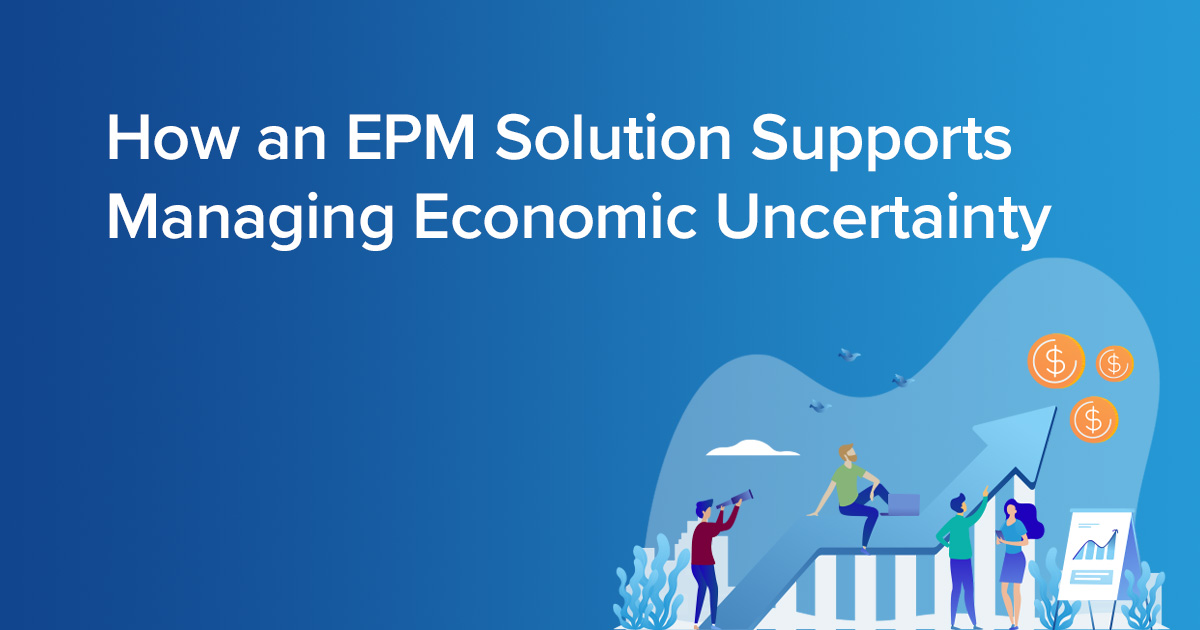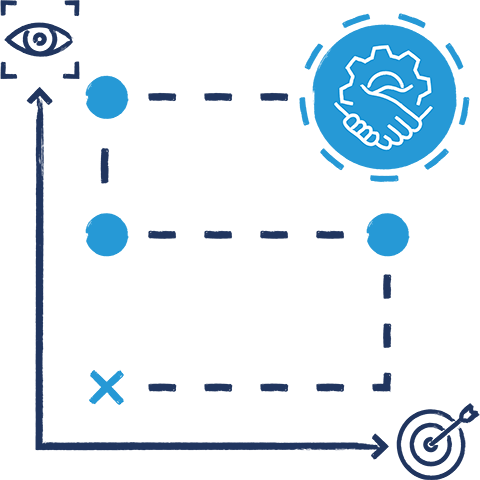
The 5 S&OP Maturity Levels – Where do you stand and how do you get to the next level?
What does maximum maturity mean in the 5-step Gartner Sales & Operations Model and how do you get there? We are pleased to welcome Jedox Partner and S&OP specialist, smartPM.solutions, to the Jedox Blog to answer these questions in this post.
Improving and optimizing company processes requires you to evaluate your status quo. In this post, we’ll describe different maturity levels (see Figure 1) and ask you to consider which stage best aligns with the current status of your S&OP company processes. Regardless of what stage your company finds itself in right now, you will find specific suggestions for improvement that lead to the next level. In our second blog post on this topic, we demonstrate directly how the solution can be implemented using various examples. We will also show you the associated analysis and the step-by-step development to a maximum value-oriented Sales and Operations Planning in Stage 5 of maturity.
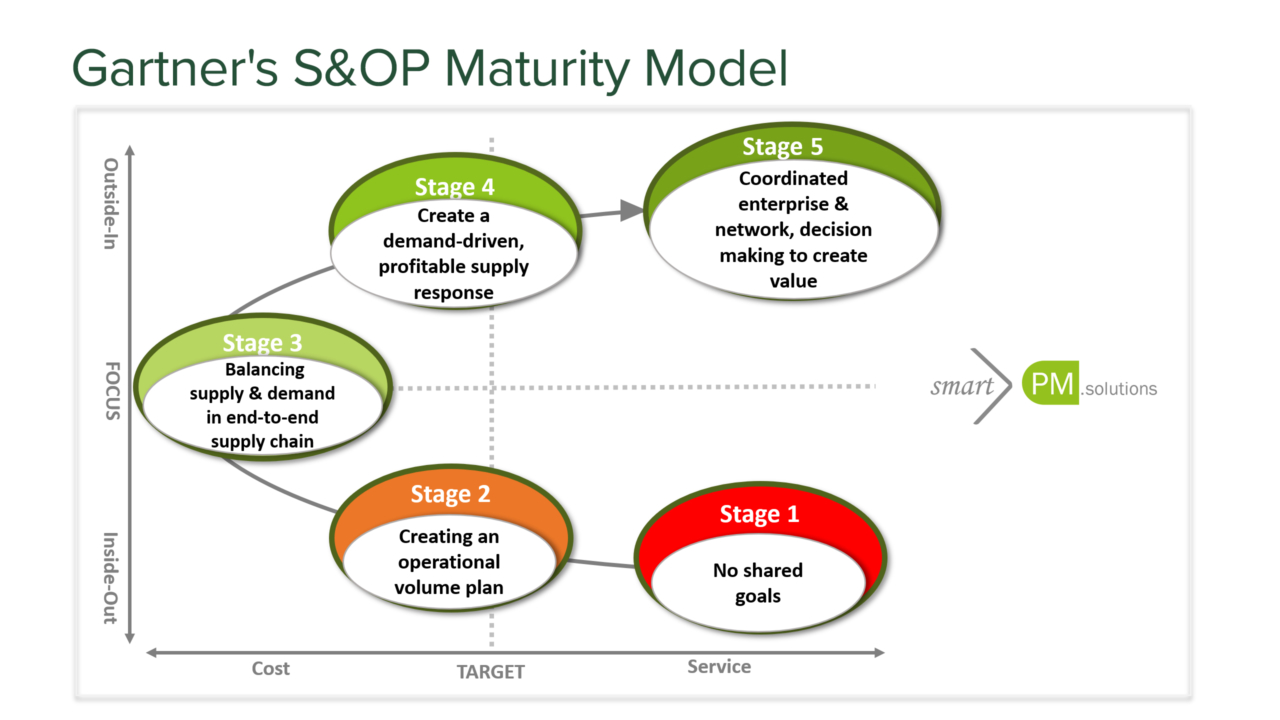
Figure 1: 5 Stages of the Gartner S&OP Maturity Model
The 5 stages of the maturity model
Stage 1 – no shared goals
Do you still work with spreadsheet programs such as Excel in S&OP planning, analysis, and reporting? Is there little coordination between your departments and does this coordination rely mostly on informal meetings? Are you lacking common goals? Then you are currently in Stage 1 of the maturity model in which spreadsheets need to be updated, sent between departments and are often stored on local drives. “We work with 800-900 rows in an Excel table, and that’s no longer fun. There’s a lack of transparency, trust and thus data acceptance. If you ask yourself whether the formula fits at all – that is an extreme burden. VBA, endless formulas and multiple entries of the same data should be a thing of the past since they’ve already been replaced by a modern system from smartPM.solutions,” explains Arbi Araks, Head of Finance & Controlling at List GC, who recently introduced an integrated planning system. More information on the case study List GC can be found in the reference report.
The planning in Stage 1 of the maturity model is more or less completely uncoordinated and competing goals weaken or even hinder the company’s success. For example, you might find that Production is not familiar with the marketing plan and capacity planning is not coordinated with expected market demand. Adding to the challenge, your Sales team is responsible for increasing sales while production capacities are, however, tied to certain limits and Purchasing is busy with raw material shortages and savings.
Perhaps surprisingly, some companies are currently emerging from the Covid-19 crisis better off than before, with their sales figures approaching all-time highs. How does this happen? The answer is that few companies are prepared for these types of “surprises” and the ones that are come out on top. Connected departments and data as well as scenario comparisons cannot be achieved using only Excel. But this is exactly what is needed, as higher sales figures have a holistic effect on the company – on personnel and production capacities, warehousing, purchasing, sales, and marketing. Comprehensive coordination and holistic control are only possible with a professional, integrated planning system that allows all departments to access data and call up analysis results in real time. Rolling forecasts, value driver analyses and scenario analyses that simulate decisions on the company’s success (P&L, balance sheet, CF) lead to proactive decision-making and smooth processes.
“Why did we decide to introduce a CPM system now? ‘Attack is the best defense.’ or ‘If you find yourself in a hole, you better stop digging.’ These mottos are about ‘DOING’. Because a crisis also offers opportunities – that is a well-known fact. Therefore, and due to an extremely positive order situation, we currently want to put our software landscape on a modern footing. In recent years, we have invested heavily in the continued training of our employees. For us, this includes above all the provision of adequate, state-of-the-art software products. We have chosen smartPM.solutions as our partner for this path,”
Arbi Araks, Head of Finance & Controlling at List GC
Stage 2 – operational sales planning
Are you already creating simple operational plans to match supply and demand? Are you striving to optimize the supply chain as well as logistics and warehousing? Are you using simple tools for volume-based planning, including forecasts? Are relevant departments still working largely independently of one another? Do you aim to achieve coordination between departments but still find it challenging to achieve efficient and targeted collaboration? Then you are currently in Stage 2 of the maturity model. Your processes are still reactive rather than proactive. There is an imbalance between supply and demand.
What you need: With access to a single point of truth through the automated connection of all departments and data sources, you can attain 100% data trust and begin making proactive decisions. Holistic company control and company goals go hand in hand. In addition, online collaboration and communication can be integrated seamlessly (e.g., with MS Teams & Planner). The setting and tracking of initiatives are standardized and easy to implement into the integrated planning system. Clear structures with responsibility and role concepts facilitate cooperation. This ensures that everyone joins together in a traceable manner in order to achieve the strategic company goals.
Stage 3 – demand and supply balancing within an end-to-end supply chain
Does your S&OP department manage processes and work closely with the Controlling department, which brings together and monitors the data? Does your Sales network coordinate closely with Production? Do you already use a professional controlling system in your company that includes material flows and quantity-based planning? Then you are in Stage 3 of the maturity model and have largely left spreadsheets behind. But, we still have some ideas for you on how you can make your processes even more efficient and add value; there are many ways that you can benefit from an integrated planning solution for holistic company management.
For you, the journey to the next stage of maturity could, for example, continue like this: Production and demand plans are automatically compared in the integrated S&OP system and gaps are identified. Figure 2 shows you a smartPM.solutions Supply & Demand Balancing Dashboard which highlights just that. For more S&OP-related content, please watch out for our upcoming blog post or visit the Jedox Marketplace.
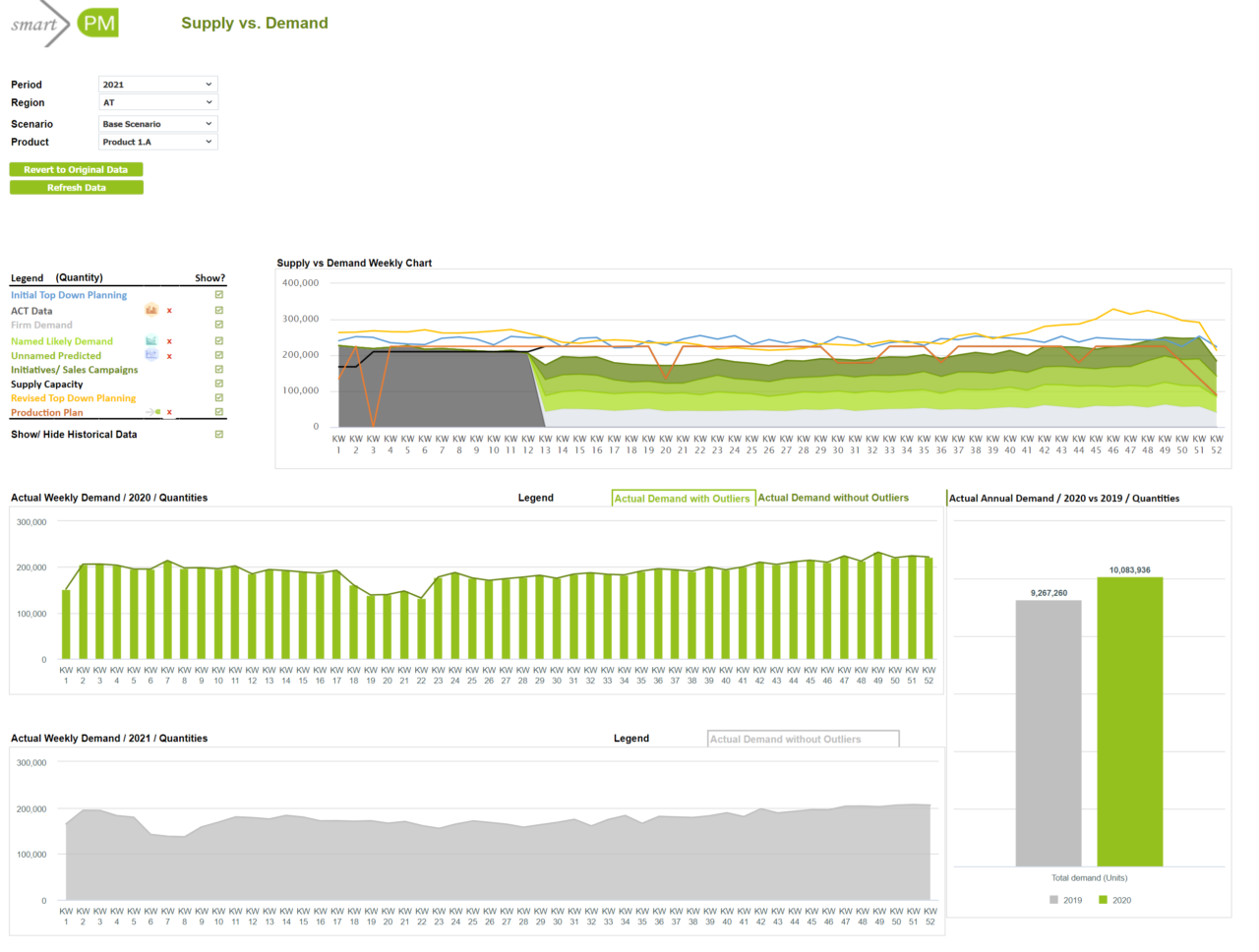
Abbildung 2: Supply & Demand Balancing Dashboard
Any gaps can be counteracted proactively with initiatives. With AI procedures, forecast sales drops can be prevented, for example, through marketing promotions. External influencing factors can be included in the forecasts and considered depending on their relevance. On the other hand, if the expected demand is very high, production conditions, storage and staff levels can be adjusted in advance with sufficient lead time. Let’s take a look at the case of a project-driven company, such as a contract manufacturer: making decisions for or against a project based on the project calculation becomes easier, and less lucrative projects with longer delivery times can be down prioritized. For this type of holistic, predominantly automated company control, all company departments must be networked with one another. More on this in Stage 4.
In addition, all those responsible for the S&OP process must coordinate their efforts and work together in regular meetings with mandatory participation based on financial indicators, such as the order fill rate, inventory turns or functional costs.
So you have placed yourself in one of the first three stages of the Gartner S&OP Maturity Model? In fact, most companies are currently at maturity levels 1 to 3. In these stages, there is often a lack of coordination between a company’s strategic and operational planning. According to research, maturity levels 4 and 5 can only be achieved with an integrated planning system.
Stage 4 – demand-oriented, profitable product/service mix
Are several of your company departments, such as S&OP, Marketing, Sales, Production and Finance, already coordinated and do they have access to a single point of truth? Is purely quantity-based planning supplemented by the financial perspective? Do you focus on how decisions will impact company results? Are demand forecasts made with mathematical models? And are formal meetings held on a regular basis with everyone involved? Then you are in Stage 4 of the maturity model. Your company’s executive management provides support to achieve strategic company goals and keeps a constant eye on progress. Demand-driven strategic plans are the drivers, and you work with customer segments and their profitability. Financial indicators such as customer satisfaction, working capital and total costs help you optimize the plans.
If not already available, online collaboration and communication functions integrated into the S&OP controlling system can be used for easy coordination. Role and access rights as well as initiative tracking support the operational implementation of the company strategy. For example, contribution margin analysis and customer segments based on relevant criteria can help to optimize the demand mix. In the course of the go-to-market planning, new markets open up, and suitable products are developed and promoted. AI-supported forecasts allow precise predictions of market development, including numerous external and internal influencing factors.
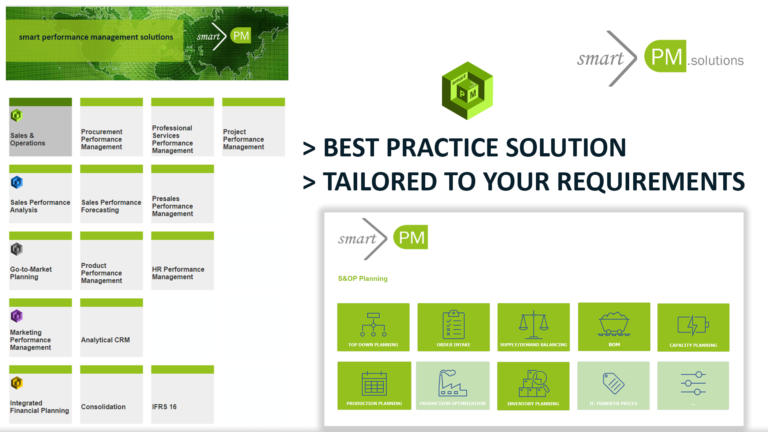
Figure 3: Intuitive, modern user interface of the seamlessly connected smartPM.solutions
Stage 5 – coordinated, connected company with added value
According to one recent study[1], once optimal S&OP processes are implemented as in Stage 5 of the maturity model (see Chapter 1), forecasts are 20-50% more precise, storage costs decrease by 10-30%, production time savings range from 5-15% and a 5-10% increase in delivery time can be achieved.
Do you evaluate and continuously improve your processes through performance analysis? Do you consistently document lessons learned and implement initiatives that are regularly and automatically tracked? Is a proactive, scenario-based approach taken with regard to decision-making? Has the S&OP planning been integrated into the holistic company planning and is it continuously improved? Do you have regular, event-driven meetings?
Congratulations! Then you are in the highest maturity Stage 5 of the S&OP model. You are seamlessly connected and changes in the system are immediately apparent. Planning is always based on the latest data and is optimized with the help of rolling forecasts by using a comprehensive control system in which all users are encouraged to keep their data up-to-date. This creates maximum efficiency and process satisfaction. Standardized reports can also be generated directly from the system at short notice. All departments are involved in discussing and analyzing scenarios, allowing conclusions to be drawn about the impact of decisions on the balance sheet, cash flow and P&L. Initiatives can also be simulated. Self-learning AI algorithms help to identify key drivers and allow increasingly precise forecasts as a result of neural network structures. You learn from experience and develop solutions independently. The reliability of decisions increases and allows proactive management initiatives.
Classifying your company in the maturity model is a prerequisite for improving S&OP maturity. Determine your position and your next steps based on the following parameters: technology used, coordination processes/meetings and the degree of coordination between supply and demand. Using the corporate performance management solution from smartPM.solutions based on market-leading technology from Jedox, the next blog post will show how value-oriented, holistic company management leads to strategic success. Reach Maturity Stage 5 quickly with the best-practice S&OP solution und you will see success shortly after implementation. The 5-step approach followed by smartPM.solutions is an integral part of the software and leads to the highest level of S&OP maturity.
The overview of the process in this 5-step model is shown in Figure 4. In the next blog post, we will show the step-by-step approach of value-oriented S&OP performance using practical examples in the form of dashboards directly from the controlling solution.
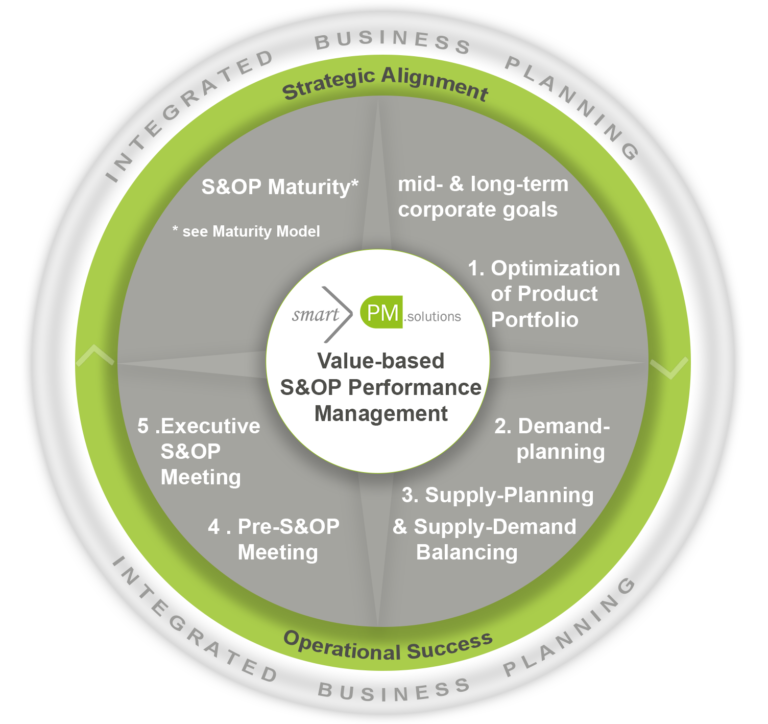
Figure 4: smart S&OP performance management approach
Learn more in our S&OP performance management whitepaper or visit the Jedox Marketplace to try the demo version of the S&OP solution from smartPM.
[1] Hinkel, J. Merkel, O., Kwasniok, T., Good Sales and Operations Planning Is No Longer Good Enough. Supply Chain Management Review, 2016.




